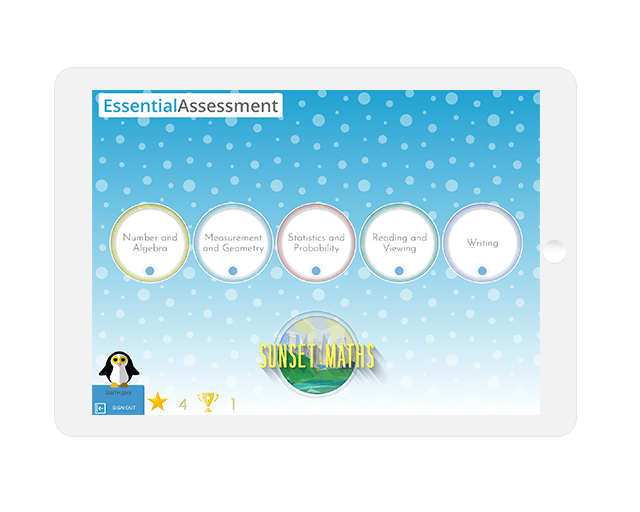Summative assessment of the portfolio is designed to provide quality information with regard to student learning in a timely, manageable, and inexpensive manner without impacting negatively on teaching and learning. It is high stakes and occurs for certification and selection in a range of contexts.
- Summative Assessment Reading Comprehension
- Summative Assessment For The Unit Communication And Technology
- Difference Between Formative And Summative Assessment
- Summative Assessment Definition
- Summative Assessment.com Evaluation
Summative Assessment is an assessment that is usually administered toward the end of a learning period to measure the extent to which the learners have mastered the essential learning competencies, the results of which are recorded and are used to report the learner’s achievement. Make math learning fun and effective with Prodigy Math Game. Free for students, parents and educators.
Summative assessments occur at the end of a course or at the end of a series of learning modules and typically result in a score or a grade. Summative assessments evaluate the student’s achievement of the desired learning outcome at the completion of the course or learning module. Summative assessments are higher stakes, and often consists of performance evaluations, authentic writing assignments or projects, or exams.
Remote Summative Assessments can be administered in various formats:
Take-Home Exam or Assignment | A take-home exam or assignment can be completed outside of the classroom at the student’s pace, then submitted online via Canvas or other integrated tool such as Gradescope. |
Online Exam | An online exam is a set of questions in a quiz format delivered through Canvas. The question type for online exams range from multiple choice to short answer. Online exams are typically timed and recommended for proctoring. |
Project-Based Assignment | Projects can range from group work, portfolios, presentations, reports, creative work, that are completed outside of class and can be submitted in a file format via Canvas. |
Designing appropriate assessments
In a physical classroom, you may administer an exam and create a closed environment for testing student knowledge and comprehension. However, in the remote environment, it is quite different and expectations may need to shift from the circumstances of a physical space and simultaneous time provide.
Take this opportunity to focus on the authenticity and expression of learning goals in your course. Carefully consider your expectations of what students should be able to demonstrate, know, and value by the end of the course. The summative assessment you design should allow you to evaluate if students have met those expectations.
- Identify the learning objectives - the skills, knowledge, and values that students will have gained by completing the course, and the order of thinking required to achieve the learning objectives.
- Determine the criteria and characteristics of successfully achieving those learning objectives.
- Design the assessment that will allow students to best demonstrate their gained skills, knowledge, and values.
| Learning Objective/ Order of Thinking | Definition of Order of thinking | Assessments that align with order of thinking |
| REMEMBER | Retrieve information such as terms, facts, and concepts from memory | Multiple choice, Matching, Fill-in-the-blank, True/False, Self-Check, Label, Identify terminology and facts |
|---|---|---|
| UNDERSTAND | Construct meaning from instructional messages and content | Short Answer, Compare-and-Contrast, Identify examples or principles True/False, Multiple Choice, Problem Sets, Categorize Tokyo tenma devil prison english patch download. Reading Summary, Paraphrase, Short Essay |
| APPLY | Carry out or use a procedure in a given situation | Demonstrate a process, Complete a new task, Prototype, Simulation, Reflection, Presentation, Problem Sets |
| ANALYZE | Break into parts and determine how parts relate or contribute to a structure or purpose | Case Studies, Labs, Reports, Essays, Projects, Argumentation, Evidence Debates, Argumentation, Perspective |
| EVALUATE | Make constructive judgements based on criteria and standards | Critique, Product Review, Research Paper, Peer Review, Self Assessment Problem sets |
| CREATE | Put elements together to form a coherent or functional whole, a new pattern, or structure | Research Study, Composition, Performance, Essay, Business/Organization Plan, Web or Product Design, Proposition or hypothesis, Find a solution, Portfolio |
Summative Assessment Reading Comprehension
Key | Tool |
Canvas Quiz | |
Canvas Discussion | |
Canvas Assignment |
Create a Quiz / Exam in Canvas
The Canvas Quiz tool allows you to create a test or a quiz that consists of various question types including Multiple Choice, True/False, Matching, Fill-in-the-Blank, Numerical, Short Answer/Essay, and more.
See the Canvas Quiz Guides.
1. Write QuestionsPrepare questions (and multiple versions) to incorporate in the online exam.
Determine dates:
- Due Date
- Submission Window
- Available From
- Available Until
 2. Add to Canvas
2. Add to Canvas- Academic integrity pledge
Configure settings
3. Publish the QuizPublish the quiz, configure score release, then let students know they can submit the final online.
Tip: You can use the “View as a student” from the Canvas homepage to access a preview of the online exam and test the submission process.
4. Review & ScoreSummative Assessment For The Unit Communication And Technology
When you are ready to score the submissions, open SpeedGrader or student results to review materials, provide feedback, and enter a score.
Accessibility reminders:
Create accessible exam instructions, to ensure all students can understand the information:
Difference Between Formative And Summative Assessment
- Images: Provide alternate text for images or scanned graphs
- Captions: Ensure all videos have captions
- Colors: Do not use color alone to convey meaning, and select colors with high contrast ratios
Accommodations:
Give individual students extra time, if appropriate based on accommodation letter from the Office of Students with Disabilities.
Summative Assessment Definition
- In Course Navigation, click the Quizzes link.
- Click the name of the quiz.
- Click the Moderate This Quiz link.
- Locate the student and click the Edit icon.
- Type the number of extra minutes in the Extra Time on Every Attempt field.
Summative Assessment.com Evaluation
Resources: